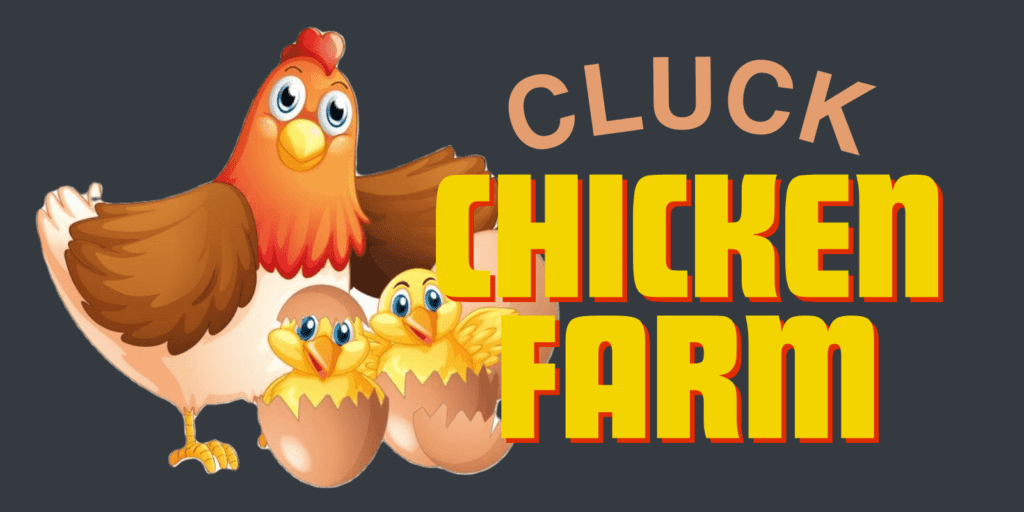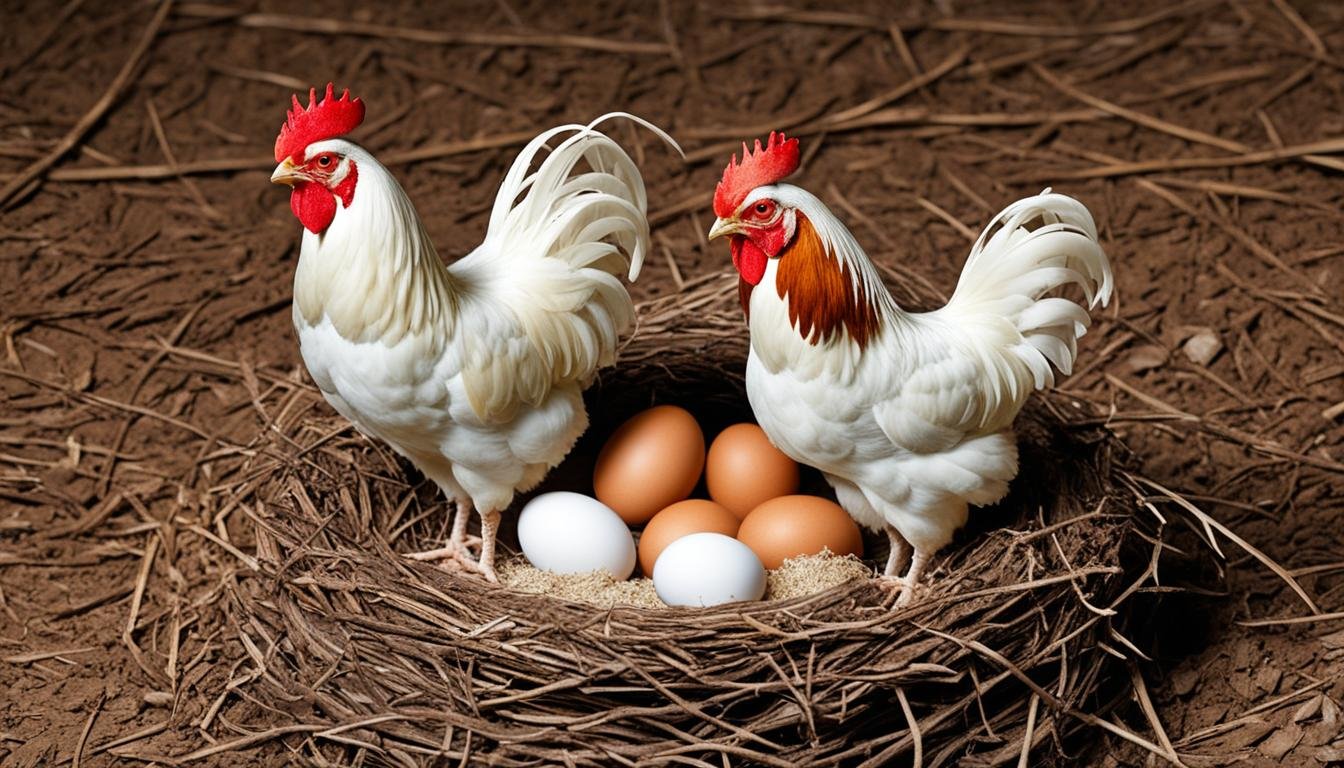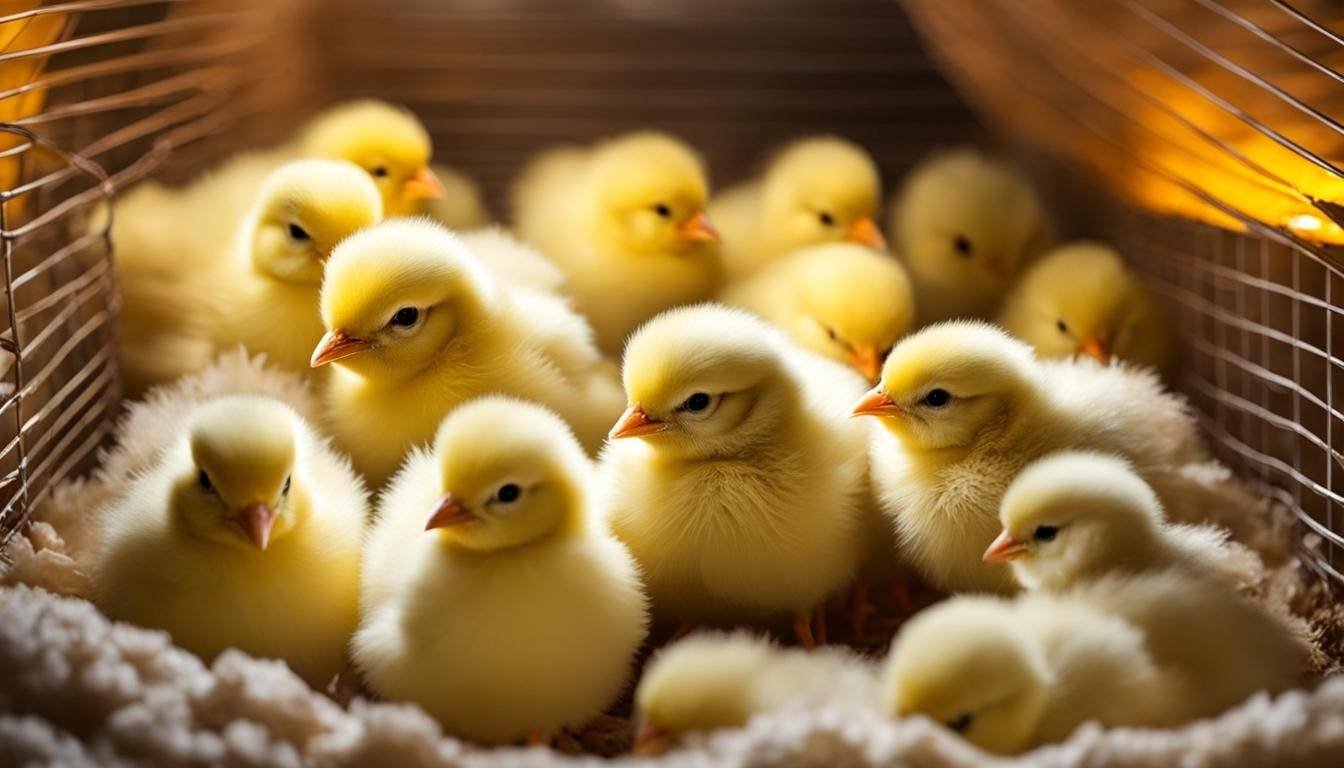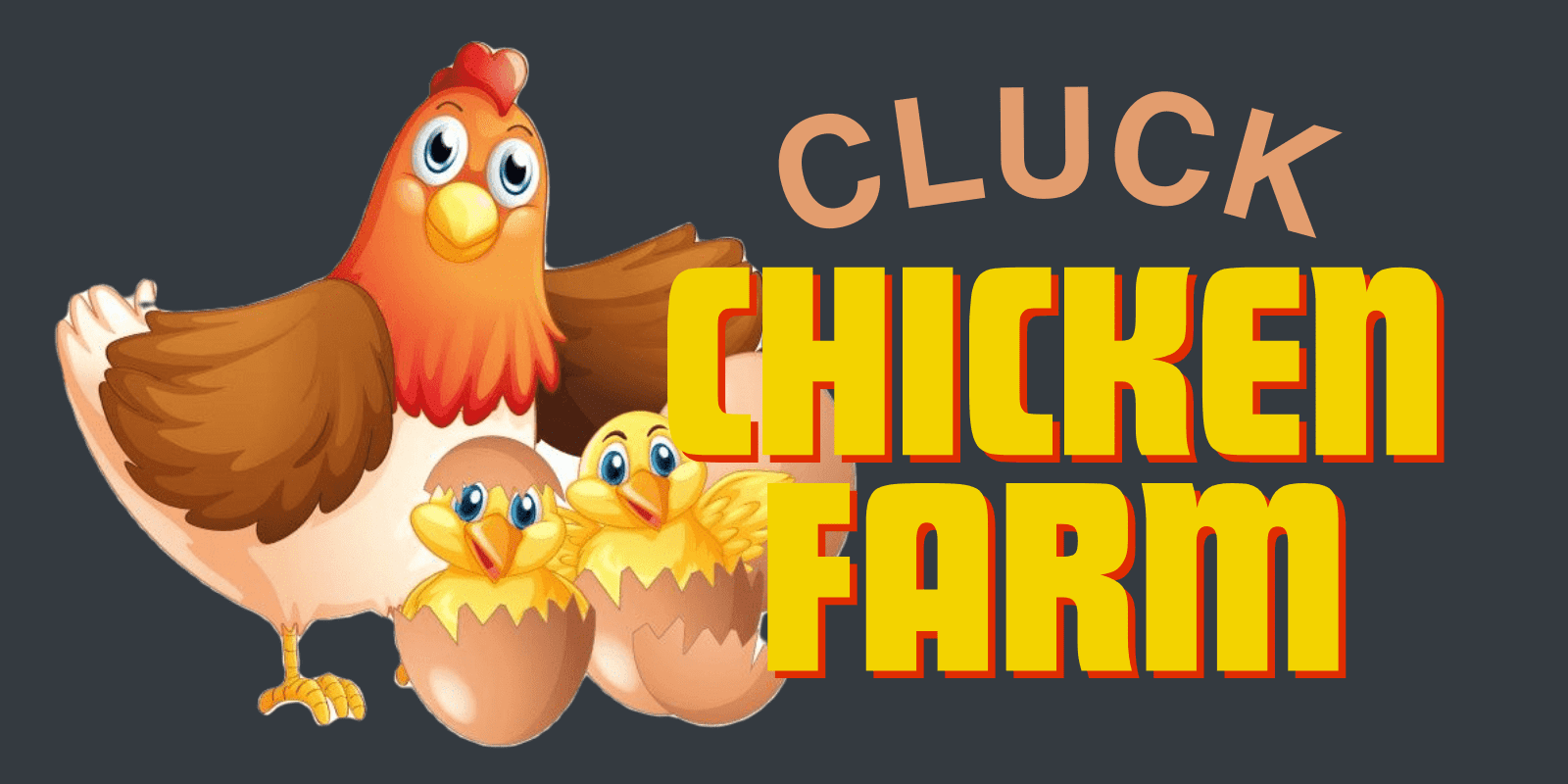Have you ever wondered how chicken eggs are fertilized? It’s a fascinating process that involves intricate biological mechanisms. In this article, we will explore the chicken egg fertilization process, gain insights into the chicken mating process, and understand the chicken reproductive system.
Contrary to popular belief, not every egg has the potential to develop into a baby chick. Eggs are like houses for potential chicks, and fertilization is the process that puts a chick in the house. However, it’s important to note that store-bought eggs are never fertilized, as commercial layers are not allowed to mate with roosters.
When you crack open an egg and see a red spot, it does not indicate fertility. It is actually a meat spot caused by a blood vessel rupturing during the egg formation process. Moreover, the egg yolk and egg whites do not develop into baby chicks; they serve different purposes in nurturing the developing embryo.
In the following sections, we will delve deeper into the role of roosters in egg fertilization, the fertilization process in hens, how to determine egg fertility, incubating fertilized eggs, debunking common misconceptions, and provide a conclusion summarizing our findings.
The Role of Roosters in Fertilization
Roosters play a crucial role in the fertilization of chicken eggs. Their involvement is essential for the production of fertile eggs, which can develop into baby chicks. Understanding the rooster’s mating behavior and reproductive anatomy provides valuable insights into the fascinating process of egg fertilization.
Roosters exhibit various mating behaviors to attract hens and ensure successful reproduction. One such behavior is the courtship dance, where the rooster showcases his physical prowess and vibrant feather display to capture the attention of potential mates. Additionally, roosters engage in tid-bitting, a feeding behavior that involves offering food to hens as a courtship gesture.
The mating process begins when the rooster mounts the hen. During this intimate act, the rooster transfers sperm to the hen’s cloaca, which is the common opening for waste elimination and egg laying. Contrary to popular belief, roosters do not possess a penis. Instead, they have a specialized structure called a papilla, through which the sperm is passed into the hen’s reproductive tract.
Rooster reproductive anatomy plays a fundamental role in the fertilization process. The testes are responsible for producing sperm within the rooster’s body. These sperm are then stored in the seminal vesicles until mating occurs. The papilla, located near the vent area, enables the efficient delivery of sperm during the mating process.
Mating Behavior of Roosters
- Courtship dance
- Tid-bitting
Reproductive Anatomy of Roosters
- Testes for sperm production
- Papilla for sperm delivery
Roosters play an instrumental role as active participants in the fertilization of eggs. Their mating behaviors and reproductive anatomy contribute to the successful transfer of sperm, which leads to the potential development of baby chicks.
The Fertilization Process in Hens
Understanding the fertilization process in hens is essential to grasp the intricacies of chicken egg development. While hens can lay eggs without ever mating, the role of roosters in fertilization cannot be overlooked.
Hens possess reproductive anatomy that facilitates egg production and fertilization. They have ovaries responsible for producing eggs, but it is important to note that in most cases, only the left ovary is functional. This ensures a consistent flow of eggs for potential fertilization.
Once a rooster mates with a hen, the fertilization process begins. The sperm from the rooster reaches the hen’s oviduct, where it fertilizes the yolk of the egg. This forms the basis for embryonic development. Fertilized eggs remain fertile for approximately two to three weeks post-mating, providing an opportunity for successful incubation and hatching.
For the sperm to meet the egg, it goes through a journey within the hen’s reproductive system. The sperm migrates from the cloacal area to the oviduct, ultimately reaching the infundibulum, which is the site of fertilization. This intricate process ensures that the genetic material necessary for creating a new life is successfully delivered.

Understanding the fertilization process in hens sheds light on the remarkable journey of egg development and the role of roosters in facilitating successful fertilization. It allows backyard chicken keepers and enthusiasts to appreciate the complexities of reproduction within their flocks.
Determining Fertility in Chicken Eggs
When it comes to determining whether a chicken egg is fertile or not, cracking it open is not the only way. You can employ a method called candling, which involves shining a light through the eggshell to examine the internal development of blood vessels and structures.
Freshly laid fertile eggs may not exhibit any visible signs of fertility. However, upon candling, you may observe a blastoderm or bullseye shape on the yolk, indicating that the egg is indeed fertile.
Seasonal variations can also impact egg fertility, with peak fertility typically occurring in the spring and early summer months.
Signs of a Fertile Egg
When candling chicken eggs, keep an eye out for the following signs that indicate fertility:
- The presence of a blastoderm or bullseye shape on the yolk
- Visible blood vessels branching out from the yolk
- A well-defined air cell
It’s important to note that the absence of these signs does not necessarily mean the egg is infertile. Candling provides a reliable method for determining egg fertility, enabling chicken keepers to make informed decisions about incubation and hatching.
Now, let’s take a closer look at the process of incubating fertile chicken eggs in the next section.
Incubating Fertilized Eggs
Once you have fertile chicken eggs, you have two options for incubation: natural incubation with a broody hen or artificial incubation using an incubator.
When choosing natural incubation, you’ll need a broody hen who will willingly sit on the eggs for the entire incubation period of about 21 days. The hen will provide the necessary warmth and periodically turn the eggs to ensure proper development. It’s crucial to create a quiet and secure nesting place for the broody hen to minimize disturbances and maximize the chances of successful hatching.
For those without a broody hen or who prefer artificial incubation, using an incubator is a popular and effective method. Incubators provide controlled temperature and humidity levels necessary for egg development. You’ll need to invest in a reliable incubator and closely monitor and regulate these factors to create an optimal environment for embryonic growth.
Brooding Temperatures and Humidity
Different species of poultry require specific temperature and humidity settings for successful incubation. Chickens generally need a temperature of around 99-100 degrees Fahrenheit (37-38 degrees Celsius) and a humidity level of about 45-55% during the first 18 days of incubation. Then, for the final three days, the temperature should be raised slightly to 100-101 degrees Fahrenheit (38-38.5 degrees Celsius), and humidity levels increased to 65-75%. These adjustments mimic the mother hen’s natural behavior during the final stages of incubation.
Turning and Monitoring Eggs
During incubation, whether natural or artificial, it’s essential to regularly turn the eggs to prevent the embryos from sticking to the shell and promote balanced development. Manual turning is necessary when using an incubator, usually done at least three times a day. For broody hens, they’ll naturally turn the eggs as they settle and adjust their position on the nest.
Additionally, monitoring the temperature and humidity levels is crucial to maintain the optimal conditions throughout the incubation process. Incubators come with built-in thermostat controls, while broody hens instinctively regulate their body heat.
| Aspect | Natural Incubation with Broody Hens | Artificial Incubation Using an Incubator |
|---|---|---|
| Temperature | Hen regulates body heat | Controlled by incubator |
| Humidity | Naturally maintained by hen | Controlled by adjusting settings |
| Turning eggs | Hens turn eggs naturally | Manual turning required |
By carefully managing the incubation conditions and following the recommended guidelines, you increase the chances of successfully hatching healthy chicks from your fertile eggs. Whether you opt for broody hens or incubators, the incubation period allows you to witness the miracle of life as the chicks develop and eventually hatch.
Common Misconceptions about Fertilized Eggs
When it comes to eggs, there are several common misconceptions surrounding fertility. Let’s debunk some of these myths and set the record straight.
Eating Fertile Eggs: Safe and No Baby Chicks Involved
One of the key misconceptions is that eating fertile eggs means consuming baby chicks. This is not true. Fertile eggs that you find in grocery stores are not actually fertilized, regardless of any labeling. Commercial egg production facilities do not allow hens to mate with roosters, so the eggs sold are not fertile and do not contain developing embryos. Therefore, eating fertile eggs is completely safe and does not involve consuming baby chicks.
No Significant Difference in Taste, Nutrition, or Health Benefits
Another misconception is that fertile eggs have a different taste, higher nutritional value, or additional health benefits compared to unfertilized eggs. In reality, there is no significant difference in taste, nutrition, or health benefits between the two. The nutritional content of an egg primarily depends on the hen’s diet and living conditions, rather than whether it is fertilized or not.
When it comes to taste, any perceived variation is likely due to factors such as the hen’s diet or the freshness of the egg, rather than its fertility status. So, whether you choose to consume fertilized or unfertilized eggs, rest assured that both options are equally nutritious and delicious.
Blood Spots on the Yolk: Safe to Consume
Many people believe that blood spots on the yolk indicate fertility, leading to concerns about consuming such eggs. However, blood spots are not a reliable indicator of fertility and are perfectly safe to consume. These spots are caused by a ruptured blood vessel during the egg’s formation process and have no bearing on fertility.
The Chalaza: Not an Embryo or a Sign of Fertility
Another common misconception is regarding the chalaza, which is the stringy substance in the egg white. Some people mistake the chalaza for an embryo or a sign of fertility. However, the chalaza is actually a structure that helps anchor the yolk within the egg and does not indicate fertility. It is perfectly safe and normal to consume.
Now that we’ve cleared up these misconceptions, you can enjoy both fertile and unfertilized eggs knowing that they are equally safe, nutritious, and delicious options.
The Myth of Fertile Eggs: Debunked
| Myth | Fact |
|---|---|
| Eating fertile eggs means consuming baby chicks. | Eating fertile eggs is safe and does not involve consuming baby chicks. |
| Fertile eggs have a different taste and higher nutritional value. | There is no significant difference in taste, nutrition, or health benefits between fertile and unfertilized eggs. |
| Blood spots on the yolk indicate fertility. | Blood spots are safe to consume and do not indicate fertility. |
| The chalaza is an embryo or a sign of fertility. | The chalaza is a normal part of the egg and has no relation to embryo development or fertility. |
Conclusion
Understanding chicken egg fertilization is essential for backyard chicken keepers and those interested in hatching chicks. By debunking myths and sharing accurate knowledge, we can promote a better understanding of egg fertility.
Contrary to popular belief, unfertilized eggs are safe to eat and do not differ significantly in taste or nutrition from fertile eggs. So, whether you hatch chicks or enjoy eggs for their nutritional benefits, both options are equally viable.
To effectively manage your flock, it is important to collect eggs regularly and be aware of the role roosters play in egg fertilization. This knowledge enables you to make informed decisions that align with your goals and preferences as a chicken keeper.
By being well-informed about understanding chicken egg fertilization, debunking myths, and embracing the facts, you can confidently nurture your flock, enjoy fresh eggs, and even embark on the exciting journey of hatching chicks.





